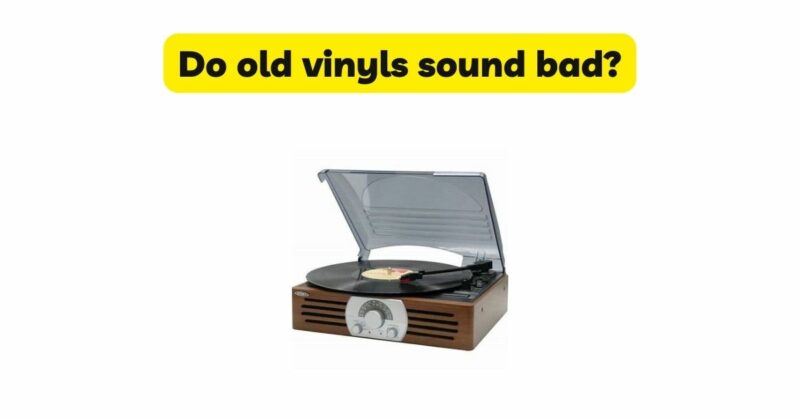Vinyl records have stood the test of time, carrying with them a sense of nostalgia and a unique listening experience. However, there is a prevailing notion that old vinyl records sound bad compared to modern audio formats. In this article, we will delve into the concept of old vinyl records sounding “bad” and examine the factors that contribute to this perception. By debunking the myth and exploring the characteristics of vintage vinyl records, we can gain a deeper understanding and appreciation for their sonic qualities.
- Recording Techniques and Technology: Old vinyl records were created during a time when recording techniques and technology were different from what we have today. These vintage recordings often possess a distinct character, capturing the sound of the era and the specific techniques employed at that time. While they may not meet the technical standards of modern recordings, this does not necessarily make them sound “bad.” Rather, they offer a unique and authentic representation of the music as it was intended to be heard during that period.
- Vinyl Warmth and Analog Sound: One of the defining qualities of vinyl records is their warm and analog sound. This inherent characteristic is often cherished by music enthusiasts for its ability to add depth and richness to the listening experience. The analog nature of vinyl playback can produce a natural and organic sound that many find more pleasing and immersive than the precise but sometimes sterile sound of digital formats. While it may not conform to modern high-fidelity standards, the “warm” sound of old vinyl records is part of their unique charm.
- Record Condition: The condition of old vinyl records can vary greatly depending on how they have been stored and handled over the years. Records that have not been well-preserved may exhibit wear, scratches, or surface noise that can affect the sound quality. However, it is important to note that not all old records sound bad due to their age. Well-preserved records that have been properly stored and maintained can still deliver excellent sound quality, despite their age.
- Turntable Setup and Equipment: The performance of a turntable and its associated equipment can significantly impact the sound quality of vinyl records. Older turntables or poorly maintained equipment may introduce mechanical noise, tracking issues, or inaccurate speed, which can contribute to a perception of bad sound. However, with proper setup, calibration, and maintenance, including cartridge alignment, anti-skate adjustment, and stylus care, the sound quality of old vinyl records can be greatly enhanced.
- Listener Expectations: Listener expectations play a crucial role in the perception of sound quality. Many people have become accustomed to the pristine and highly processed sound of digital formats, which can lead to a bias against the imperfections and nuances of vinyl records. The unique sonic characteristics of vinyl, including surface noise, occasional pops, and the warm analog sound, may be mistakenly perceived as sounding “bad” when compared to the sonic qualities of modern audio formats. Adjusting expectations and embracing the inherent qualities of vinyl can lead to a more enjoyable listening experience.
- Musical Genre and Artistic Intent: It is important to consider the genre and artistic intent of the music when evaluating the sound quality of old vinyl records. Different genres and artists may have intentionally created recordings with specific aesthetic qualities, including rawness, imperfections, or a lo-fi sound. These artistic choices contribute to the character and authenticity of the music, and while they may not align with modern audiophile standards, they should not be considered as inherently “bad” sound.
Conclusion: The notion that old vinyl records sound “bad” is a subjective and often misguided perception. While vintage records may not meet the technical standards of modern audio formats, they offer a unique listening experience with their warmth, analog sound, and nostalgic charm. Factors such as recording techniques, vinyl warmth, record condition, turntable setup, listener expectations, and artistic intent all contribute to the perceived sound quality. By embracing the characteristics of vintage vinyl records and adjusting our expectations, we can rediscover the magic of these timeless artifacts and appreciate the distinct sonic qualities they offer. Ultimately, the sound quality of old vinyl records is a matter of personal taste and appreciation for the nostalgia and authenticity they bring to the listening experience.


